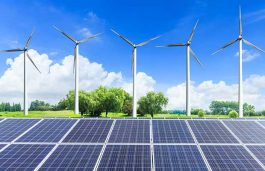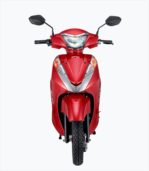Highlights :
- The dropping of the reverse bidding process for wind tenders meets a long pending demand of the sector.
- With rates considered unviable, wind capacity additions have slowed down noticeably in recent years, in a sector where the country actually has a thriving manufacturing eco system in place.
A new directive from the Ministry of New And Renewable Energy (MNRE) has confirms a long pending demand of the wind energy sector in India. The central government is looking to issue tenders inviting bids for 8-GW of wind power projects every year until the end of this decade (2030). The directive said that there will also be a new bidding process in place, the key feature being the removal of reverse bidding, as demanded by many sections of the industry.
It is good to see the government acknowledge a past error, and make an effort to fix it. The Wind Energy sector continues to be potentially a strong success story for India, and a clear trajectory of bids and demand is the least the industry deserves to make the right investments.
The MNRE communication with NTPC, NHPC and SECI, held that the old bidding process is done away. The new bidding method will be ‘single stage two envelope closed bid.’
A committee has also been set up by MNRE that will examine bid proposals and also help in faster addition of renewable energy capacity in the wind sector. The adoption of a new bidding process is based on the recommendation of the committee, said MNRE.
The directive mentioned, “Bids for a cumulative capacity of about 08 GW will be issued each year from 1st January, 2023 onwards up to 2030. ln order to ensure that wind energy capacity comes up in all the 8 windy states; every bid will be a composite bid-comprising of state specific sub-bids for each of the 8 windy states.”
According to MNRE, the green energy from the wind capacity in each sub-bids in a state shall be pooled and procurers will get that at pooled as per the notified Electricity (Amendment) Rules, 2022.
This means that the reverse auction procedure is scrapped as far as wind power is concerned and the tariffs for energy will be pooled-in across states.
MNRE said that under the new ‘single stage two envelope closed bid’ system, a bidder will have to submit one envelope that will have the technical bid and the second envelope that will have the financial bid.
The implementing agencies will open the technical bid envelope first which will be qualifying in nature. This means that those who qualify in the first bid will have their financial bids opened in the second round.
The MNRE directive said, “The bids will specify the capacity to be installed. One sub-bid will be specific to one state. The cumulative size cap in any of the B states in one year will not be more than 2-GW every year.” Also, the implementing agency could also determine minimum and maximum size of the bid considering the wind renewable purchase obligation targets of the states.
India has added 166-GW of renewable energy by the end of 2022 which is short of its original plan of achieving 175-GW. The growth of wind energy has slowed down noticeably in the past few years; it was just about 42 GW. Hence, the MNRE seems to be changing its gear as it looks to the larger national target of achieving 500 GW of installed renewable energy by 2030, which has space for wind energy of almost 160 GW.
Recently, a policy for offshore wind energy was also introduced by the government.





























